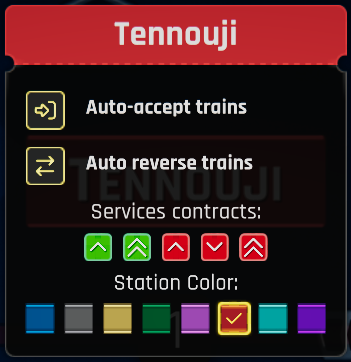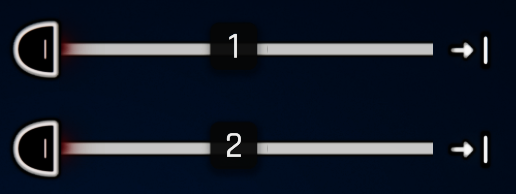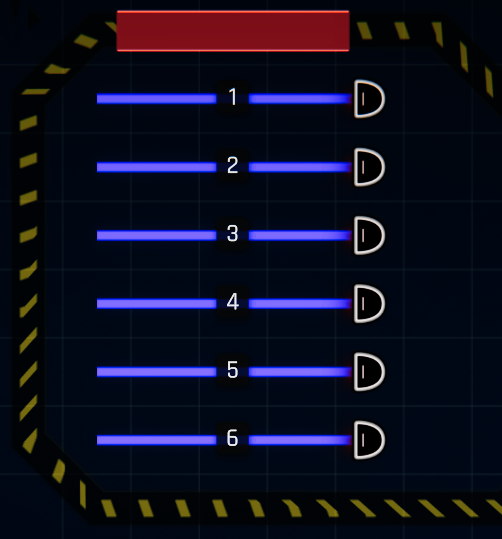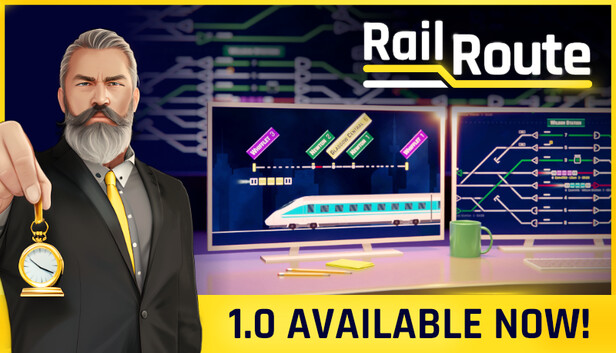Don’t know your sink from your regional, your switch from your signal? This guide will give you a quick recap on the jargon in Rail Route
Map Styles
Endless – These maps are an endless sandbox, you play for as longs as you want. Starting with the barest of tracks, little to no automation, little to no money and no points, build the map as you want, accepting the contracts you want, unlocking technologies as you progress. Whilst there’s no “end” game to it, there are three stars to achieve, the first is X number of green tokens (Commuter/Intercity), the second is Y number of red tokens (Freight/Regional/Urban), the third is a combination of X+Y (so total number of tokens)
Timetable – These maps are typically complete or nearly complete with tracks and signals, and a timetable already provided. Running from 10 minutes up to nearly 24 hours, this mirrors what real signal operators, signal controllers or line controllers deal with daily at the various signal boxes and control centres on the railways.
Rush Hour – This is an empty or near empty map with limited tracks and signals, that goes through 10 rounds (called waves) of progressively increasing number of contracts that you have to accept onto the map in a small amount of time then try to route through to their destination.
There’s also Editor mode where you can create each of those above, and you can also download more from the Steam Workshop.
Trains
Note 1: Regional trains, where they stop at stations, 1 minute. They also have a layover between legs, which can be 10, 15, 20, or 25 minutes long.
Stations

With the required research Auto-accept Trains, a tier-1 green research costing 3 
Without the required research, this option is greyed out. To accept a train, you will need to click on the circle notification next to the intended platform at the sink station.
With the required research Auto-reverse Trains, a tier-1 green research costing 5 
Without the required research, this option is greyed out. To reverse a train, you will need to right-click on a train, press z with the train selected, press the reverse button on the panel or use departure sensors to reverse the train.
This indicates what contracts are permitted at the station. The states are:
- Lit up with no icons – contracts are permitted
- Lit up with yellow warning triangle – contracts are permitted, but can’t generate as there’s no appropriate office within range of the station
- Dark with red no entry symbol – contracts are not permitted, and no contracts will generate at in-range offices
This will show the station label, and any train carriages with this station as the next station (passing or stopping) on the train schedule in the appropriate colour. You can change this as many times as you want with no cost or penalty.
Tip: Consider setting stations you don’t want in your contracts as red, your brain associates red with no-go and danger, so will make it easier to rejecting inappropriate contracts serving stations you don’t want.

Sink stations are where trains generate from outside the map area, and form the bread and butter of most trains you will use. Most trains will start from and end at a sink station. You can identify these stations as having an arrow and a perpendicular line indicating the area off the map.

Terminal stations are stations which can only be accessed from one side of the station. Care should be taken with intercity, regional and freight trains serving this station, as by their nature they will have the locos at the wrong end of the train. Regional trains can enter the station “the wrong way round” on subsequent legs in order to leave the station in the right direction, this requires setting coach yards with the appropriate setting, or running trains through sidings in such a way as to allow them to face the wrong way before returning to the station.
Through stations are the other kind of station, where trains can run through a platform from both ends. This will be the most common station you will come across.
Contracts
- Conductor Offices will generate green-token contracts, that is Commuter and Intercity.
- Dispatch Offices will generate red-token contracts, that is Regional, Freight and Urban Transit.
You can build as many as you can fit that you can afford – selling any offices returns 100% of the cost.
Contracts will always generate similar contracts based upon the stations unlocked and the type of contract. At least one of the stations will be a station that you already have unlocked. If you don’t have suitable stations open to generate, they will not generate.
Commuter services will generate one of:
- A>B>A where A is a sink station, and B is a non-sink station
- A>B>C where A is a sink station, B is a non-sink station, and C is a different sink station
Intercity services will generate one of:
- A>C where A is a sink station, and C is a different sink station. These only generate if there is no suitable non-sink station already open en-route between A and C
- A>B>C where A is a sink station, B is a non-sink station, and C is a different sink station
Regional services will generate two or more “legs” of services.
Leg 1 will either be:
- A>B where A is a sink station, and B is a non-sink station. The stop at A can be either a stopping service or non-stop.
- A>B>C where A is a sink station, B and C are non-sink stations. The stop at A will always be non-stop.
Intermediate legs can operate between any two non-sink stations, and may also stop at a third non-sink station.
The Last Leg will either be:
- X>Z where X is a non-sink station and Z is a sink station. The stop at Z can be either a stopping service or non-stop.
- X>Y>Z where X and Y is a non-sink station and Z is a sink station. The stop at Z will always be non-stop.
Freight services will generate one of:
- A>B where A is a sink station, and B is non-sink station. After waiting at station B, the train will disappear
- A>B>A where A is a sink station, and B is a non-sink station.
- A>B>C where A is a sink station, B is a non-sink station and C is a different sink station
- A>C where A is a sink station, and C is a different sink station. These generate only if there are no stations (built or unbuilt) between A and C that can handle a freight train
Urban Transit services will only generate at a non-sink station that has a CoachYard. All trains will use that non-sink station as both starting and ending station. The user then has to determine the stations the train will call at, providing the station accepts Urban Transit trains. Stations the Urban Transit trains stop at don’t need a CoachYard, but do need to have a lit Urban Transit icon (with or without a yellow warning triangle) in the station panel.
Thanks to Silden for their excellent guide; all credit belongs to their effort. If this guide helps you, please support and rate it here. Enjoy the game.
Related Posts:
- Rail Route: Red Tokens Guide (From Beginner to Automated)
- Rail Route Cantwell Belt Railway Map Guide





